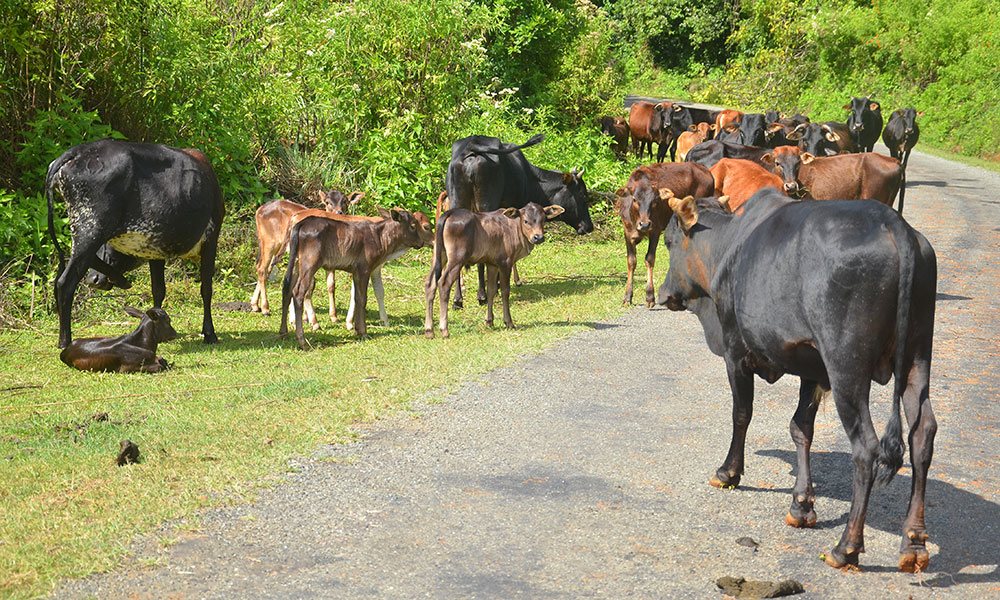Introduction
The integration of native cattle into the Sri Lankan economy, particularly through the lens of sustainability and cultural heritage, is a focal point for this study conducted by Wildreach Trust. Financially supported by the Bio Diversity Secretariat, the research was carried out across the Mahalakotuwa, Medela, Pitawala, Rathninda, and Etanwala villages, all within the limits of the Lagala Pallegama Divisional Secretariat in Matale District, Central Province of Sri Lanka. This one-year study, spearheaded by Mr. Nilupul Rangana, CEO of Wildreach Environmental Trust, aimed to assess the benefits of native cattle in terms of biodiversity, economic viability, and community values. The Choice Experiment Method was utilized to evaluate local perspectives on the cattle’s roles and benefits, from plowing to cultural significance.
Background
The communities within this region are deeply rooted in Sinhala Buddhist culture, adhering to unique traditions such as Adukku Pujawa and religious practices involving Kande Dewiyo. These rural villages have minimal infrastructure, with limited access to transportation and electricity, contributing to an agricultural economy based primarily on paddy cultivation and cattle farming. The residents have historically relied on native cattle for a range of services, from agricultural work to milking and goods transport, making the cattle an integral part of the local lifestyle and environmental ecosystem.
In 2015, the population of native cattle in this area was recorded at 530. These animals are well adapted to the local climate, surviving with minimal resources and displaying high resistance to diseases. Their resilience is crucial, as the area’s rainy and windy conditions from June to September impact daily life significantly.
Study Objectives and Research Problem
The research sought to address several key issues surrounding native cattle, including their endangered status, lack of systematic management, and underutilization in contributing to the national economy. Existing literature underscores the genetic value of native cattle; however, the Knuckles Range has seen little focused study on these animals and their adaptability. This study therefore aimed to bridge the knowledge gap, assess the socioeconomic potential of native cattle, and evaluate the ecosystem services they provide.
Methodology
An initial survey identified the biodiversity, ecosystem services, and livelihood contributions associated with native cattle in the study area. Three primary purposes for raising these cattle were determined:
- Land Preparation: 65.85% of respondents cited this as the primary purpose.
- Milking: 25.61% of respondents used cattle for milk production, mainly for household consumption.
- Goods Transport: 8.54% used cattle for carrying goods.
Using a sample of 189 farmers, choice sets were presented and analyzed with the Choice Experiment Method, assessing local preferences for cattle breed attributes such as disease resistance, adaptability, and contribution to cultural practices. The data were further examined through the Conditional Regression Model to determine the statistical significance of each attribute in relation to community preferences.
Results and Discussion
The study revealed several insights regarding local perceptions of native cattle:
- Primary Utility in Agriculture: Local cattle are primarily valued for plowing in areas where mechanized equipment cannot reach, and where rough terrain makes traditional labor necessary.
- Environmental and Cultural Value: Although the cattle contribute to the environment by aiding soil regeneration and promoting biodiversity, these attributes were not highly prioritized by households. Community members believed that cattle herds can disrupt soil formation on high elevation terrain.
- Genetic Adaptation: Native cattle’s adaptability to environmental conditions emerged as a highly valued trait, with households noting the low maintenance costs compared to other cattle varieties.
- Economic and Cultural Preferences: Respondents expressed a strong preference for cattle that contribute to traditional roles, although the usage of cattle in Thawalam (a ceremonial activity) was not deemed essential by many households in this study area.
Economic Valuation and Implications
Table 2 in the study provides insights into households’ Willingness to Accept (WTA) or Willingness to Pay (WTP) for various cattle attributes:
- Plowing: Valued at Rs. 96,550, indicating its critical economic contribution.
- Adaptation to Environment: Valued at Rs. 14,322, reflecting its economic importance.
- Cultural Activities and By-products: Positive values, with cultural activities valued at Rs. 66,389 and by-products at Rs. 43,700, respectively.
Recommendations
To further integrate native cattle into the Sri Lankan economy, the study makes several recommendations:
- Awareness Programs: Raising awareness about native cattle’s benefits for both local residents and visitors to foster interest and support for conservation.
- Tourism Initiatives: Promoting traditional cattle-based agricultural practices as tourist attractions.
- Government and Private Support: Encouraging both government and private entities to restore traditional cattle uses like Thawalam riding, which holds cultural significance.
- Cattle Conservation Measures: Preventing illegal slaughter and establishing designated forest areas for cattle grazing can help preserve native breeds.
- Genetic Research and Agro-environmental Schemes: Leveraging the gene pool of native cattle can promote resilience and sustainability in national agro-environment programs.
Conclusion
The study underscores the economic and cultural significance of native cattle in the Knuckles Range, advocating for a holistic approach to conservation and community engagement. By combining traditional knowledge with modern economic support, native cattle can play a substantial role in sustaining the unique ecosystems and economies of rural Sri Lanka.


Comments are closed